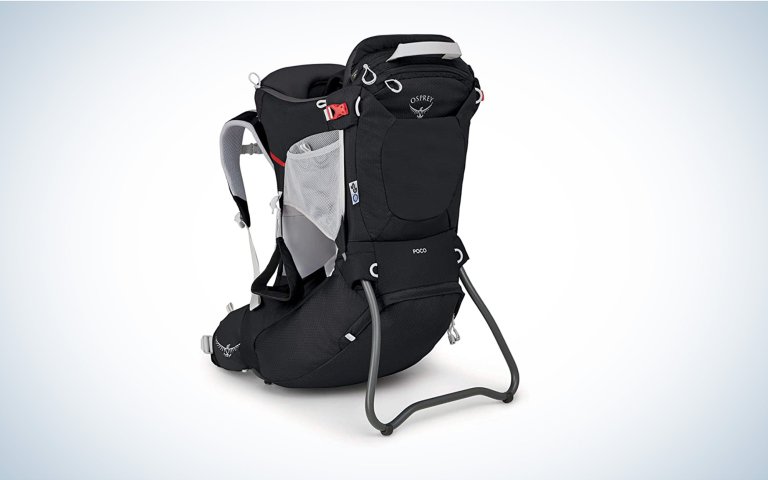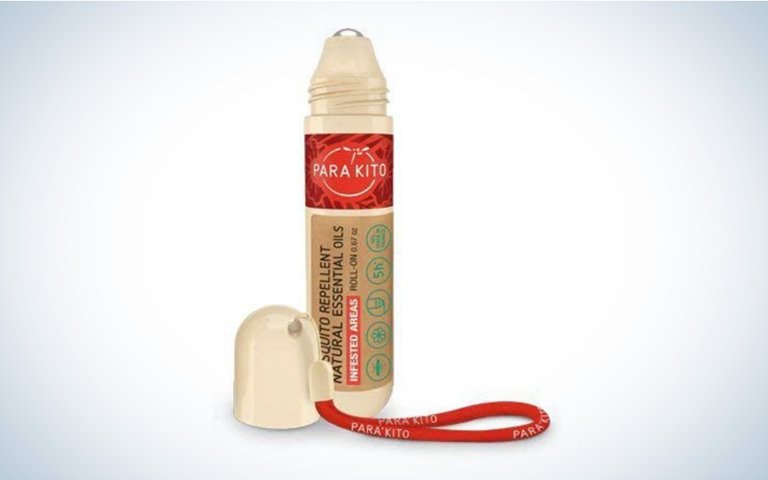We may earn revenue from the products available on this page and participate in affiliate programs. Learn More ›
If there is any activity that somehow manages to be both type 1 fun and type 2 fun at the same time, it’s backpacking with a toddler. One minute, you’re hauling 40 pounds (30 pounds of toddler, 10 pounds of gear) up to a mountain pass, trying to keep the curses under your breath while the kiddo coos delightedly in your ear about a butterfly. The next, you’re at the ridgeline, looking at an epic view of snow-capped mountains as far as the eye can see, when a wail starts up behind you because it’s windy, and your little one just wasn’t expecting that.

After carting our 2 year old on a half dozen backpacking trips, we took her on a 30-mile, four-day trek on Mount Rainier’s Wonderland Trail. These trips were both some of the most meaningful we’ve ever taken, and also the hardest to pack for—even rivaling the effort we took to plan out our gear for our first thru-hike. There are very few companies making quality gear for this age group, and in some areas (like diapering) finding a practical system takes some trial and error. Here’s what I’ve found works best for backpacking with a toddler.
Backpack Carrier: Osprey Poco AG Child Carrier
This pack is comfortable not only for the parent, with a fully adjustable mesh back panel and a comfortable hip belt and suspension, but also comfortable for your kid—we especially liked the sun shade, which both kept UV rays to a minimum and offered some protection from light rain.
Rain cover: Osprey Poco Raincover
A cold, wet kid makes for a terrible trip for everyone. Unless the forecast was confident in bluebird skies, we carried this bulky raincover, which protects the little one’s face and upper body from wind and rain.
Sleep System
We do not, and have never, co-slept at home, so I knew before we started that our toddler’s sleep system would have to be wholly separate from what we used. That being said, many families that co-sleep successfully at home have found that that translates well to the trail and helps to cut down on pack weight.
Sleeping bag: Morrison Outdoors Big Mo 20° Down Kids Sleeping Bag
This sleeping bag is sleep safe, extremely cozy, and lightweight—we stuff it in the same sack as we use for our two-person quilt. The 20-degree rating here is similar to adult sleeping bags.
Sleeping pad: Thermarest RidgeRest SOLite Sleeping Pad
In the backcountry, having a flat surface for your toddler to sleep on is not just a safe sleep practice, it’s also a practical consideration—they won’t be able to stay put on those inflatables until they are much older. Having a closed foam-cell pad strapped to the outside of a pack is also handy for on-trail diaper changes. The SOLite has a 2.1 R rating, which means it will insulate your toddler from the cold ground better than most (if that they manage to stay on it) closed foam-cell pads.
Clothing
Your approach to packing clothing for kids should be the same as for yourself: layers, layers, layers. For most backpacking trips, I pack two base layers, one insulation layer, and one shell layer for my kiddo. If I expect it to be cool, I pack a fleece layer.

Base layer: Wee Woolies Merino Base Layer Set
These base layers were comfortable for our toddler to wear during the day and doubled as sleepwear when it was bedtime. The 100% merino construction helps keep the inevitable stink of multi-day travel to a minimum.
Fleece layer: LL Bean Toddler Fleece Pants and the Uniqlo Toddler Fleece Zipped Jacket
If your kid, like mine, runs cold, it can be useful to have separate pants and top layers to use in place of, or underneath, their insulation layer.
Insulation layer: Patagonia Infant Hi-Loft Down Sweater Bunting
This puffy suit was plenty warm for the alpine and shoulder season conditions we took our little one into. On days when it was especially windy or cold, we could secure her hands and feet inside the bunting with the fold-over covers. Note that these run extremely large—our kid has always been big for her age and she fit into the 6–12-month-old size by her second birthday.
Shell layer: Tuffo Muddy Buddy
Like lots of outdoorsy families, we already had this in our closet, and it worked perfectly to block both rain and wind. Its loose construction fit all the layers we could want underneath while still allowing her plenty of mobility to play and explore.
As our kiddo grew older, and started to want—and then demand—to feed herself, we learned the hard way that we had to pack a separate shirt for her to eat in. After the first night, this shirt would be stored with the rest of our food in a bear hang or Ursack.
Diapers
This is by far the biggest challenge of hiking with an infant or toddler. There are essentially two options here—pack disposables, and be prepared to carry out all of your child’s waste, or pack cloth diapers, and commit to a regular laundry routine (and all of the paraphernalia that comes with that). Both of these options are pretty awful, so I ended up going with a hybrid approach, using a cloth diaper with a reusable case and a compostable liner—like the GroVia Biosoaker—we would then change the diaper liner frequently (every couple of hours) to minimize the amount of cleanup we would have to deal with at camp (occasionally we would dispense with the cloth altogether and just using the liner, or two liners). We would then dispose of the diaper liners in backcountry toilets whenever we ran across them. One important note here is that it is important to use only compostable (not just biodegradable or flushable) liners and to check with the appropriate land manager to confirm that disposing of these products in backcountry outhouses will not disrupt their waste disposal process. It is also not a good practice to plan to bury the liners (even home compostable diapers, such as gDiaper used to manufacture), because animals attracted to the salts in human urine may dig them up.
While we did not do this, some families have also had success saving weight in their packs by drying out wet wipes and then rehydrating them prior to use. Remember that these must be packed out once used, not buried or disposed of in an outhouse like toilet paper.
Food and Drink
While we eat breakfast, lunch, and dinner at home, on the trail, we were happy to let lunch dissolve into an endless parade of snacking. I would typically carry snacks that I knew she liked in my hip belt pockets, and we kept her water in the side or back pocket of the pack that was holding the rest of our gear for easy access. We used the same water bottle on the trail as we did at home (for comfort and familiarity), and while we started out by carrying powdered milk, we found that our daughter was happier (and more hydrated) just drinking water while on the trail.
Because toddlers can oscillate wildly between barely touching their food and eating three adult-sized servings in one sitting, it’s important to bring more food than you think you need and have a reserve jar of peanut butter in case your kid (like ours) ends up bogarting your share of dinner.
Toys
It’s hard to stress the extent to which kids really don’t need toys to play with on backpacking trips—the natural world is so stimulating to them that every rock or bug or leaf will hold their attention for hours. That said, we always brought one stuffed animal and one book, as our daughter found the familiar routines of bedtime comforting at the end of the day.

Health and Hygiene
In addition to packing a toothbrush for our daughter, we also added in a few additional essentials to our first aid kit after talking to our pediatrician: a rectal thermometer, chewable children’s Tylenol, and tweezers for the odd splinter. We also switched out some of the items we already had in our pack for child-friendly versions:
Bug repellant: PARA’KITO Mosquito Repellent Roll-on
We live in a relatively bug-free part of the country, with very few concerns about long-term diseases like Lyme or West Nile, so our go-to mosquito repellent is based on natural oils. We’ve found that this works well to keep the odd bug at bay at camp, but that it is not effective against the most serious swarms found in the southeast.
Sunscreen: Baby Bum Mineral SPF 50
On especially sunny days, we would pair baby-safe sunscreen with a hooded sunshirt to reduce the amount of skin that we needed to cover.
Final Thoughts
Using the above items, we were able to keep the weight and bulk of the additional gear we brought for our toddler down to a bare minimum, but the reality is that to keep our pack weights within reason, we also had to do a full shakedown of our existing gear to see what weight savings we could find. Backpacking with a toddler, which often involves carrying said toddler, works best with shorter distances (we found our preferred maximum distance was 7 miles) and a preexisting ultralight gear setup.


